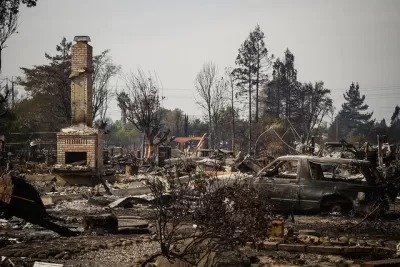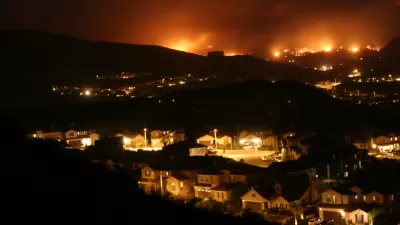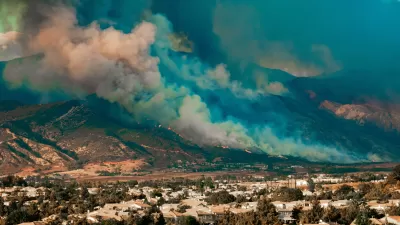With the state of California in the grips of its most destructive year of wildfires ever, policy makers are pondering questions about whether it is appropriate to rebuild in places at high risk of burning again.

"With the frequency and cost of catastrophic wildfires climbing in California, the idea of compensating property owners to not rebuild — or using economic pressure to discourage them from building in the first place — is gaining supporters among those searching for ways to cut wildfire losses," according to an article by Doug Smith.
While some policy makers and academics have proposed measures that would control the scale to which the state rebuilds in areas that have already burned, or builds new in places likely to build in the future, there are many policies in place in California that expedite rebuilding. Many in favor of rebuilding point out that new houses built to replace houses that burnt down in the fire would be built to much higher standards of fire resistance. Meanwhile, those who say the state shouldn't continue to build in fire danger areas, say a "three-strikes" rule or public land acquisition programs should be implemented around the state.
There's also the ongoing question of how to predict future fires, which was explained by an earlier Planetizen post by Katharine Jose. Along those lines, Jones reports that Cal Fire plans to revise its fire prediction maps, "[i]n light of experience showing that wind-blown embers can carry fire into suburban areas."
FULL STORY: After California's most destructive fire season, a debate over where to rebuild homes

Alabama: Trump Terminates Settlements for Black Communities Harmed By Raw Sewage
Trump deemed the landmark civil rights agreement “illegal DEI and environmental justice policy.”

Planetizen Federal Action Tracker
A weekly monitor of how Trump’s orders and actions are impacting planners and planning in America.

The 120 Year Old Tiny Home Villages That Sheltered San Francisco’s Earthquake Refugees
More than a century ago, San Francisco mobilized to house thousands of residents displaced by the 1906 earthquake. Could their strategy offer a model for the present?

High-Speed Rail Tracker
Smart Cities Dive follows high-speed rail developments around the country

Ken Jennings Launches Transit Web Series
The Jeopardy champ wants you to ride public transit.

BLM To Rescind Public Lands Rule
The change will downgrade conservation, once again putting federal land at risk for mining and other extractive uses.
Urban Design for Planners 1: Software Tools
This six-course series explores essential urban design concepts using open source software and equips planners with the tools they need to participate fully in the urban design process.
Planning for Universal Design
Learn the tools for implementing Universal Design in planning regulations.
Clanton & Associates, Inc.
Jessamine County Fiscal Court
Institute for Housing and Urban Development Studies (IHS)
City of Grandview
Harvard GSD Executive Education
Toledo-Lucas County Plan Commissions
Salt Lake City
NYU Wagner Graduate School of Public Service





























